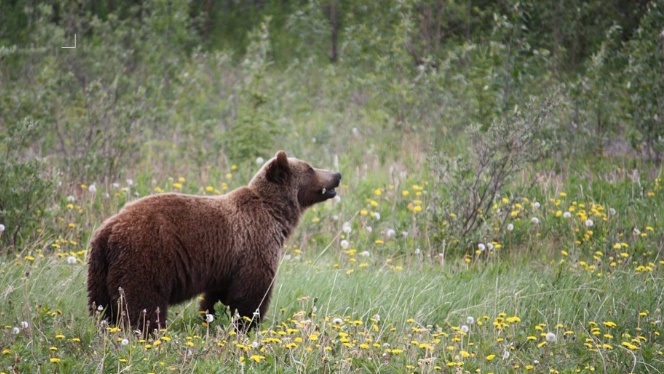Landscapes and environmental conditions shape species in myriad ways. The environment can influence the genetic make-up of a species, even its language. However, is it also possible that there is an alignment of the varied influences that a landscape confers upon the different species inhabiting it? Can genetic distinctions among bear populations be related to language differences among human populations co-existing in a region? New research says yes.
Grizzly bears living close to the Canadian coast in British Columbia and indigenous human populations have something in common, according to a recent study published in Ecology and Society. The researchers say that grizzlies in the region form three distinct groups according to genetic data. Interestingly, these genetically distinct bear groups align closely to three indigenous language families in the region. It means that one group of bears reside in a particular area and end up being genetically different from the other two groups. Again, the people residing in the same area speak a language different from the other two languages.
Jesse N. Popp, an indigenous environmental scientist at the University of Guelph, Canada, called the findings ‘mind-blowing’. “The findings show how cultural and biological diversity in the region are intertwined,” she was quoted saying.
The research started as a genetic study and its aim was to understand why the Grizzly bears had begun to colonize islands along coastal British Columbia. This behavior was rather unprecedented and scientists, along with some indigenous wildlife managers, were keen on studying it. It led to the formation of the ‘bear working group’ which comprised five nations from the region.
Lauren Henson, a conservation scientist from the Raincoast Conservation Foundation partnered with members from Nuxalk, Haitzaqv, Kitasoo/Xai’xais, Gitga’at, and Wuikinuxv Nations to find out which grizzlies from the mainland were genetically closest to those in the islands.
The researchers’ work spanned over a decade with the team landing up in remote areas of British Columbia, some of which were accessible only via helicopters. The researchers piled up leaves and sticks in the forest and covered them with dogfish oil as well as a fish-based slurry in order to attract bears and collect hair samples. They covered the pile with barbed wire – harmless for the bears – which picked some hair left behind by the grizzlies.
The researchers then extracted DNA from samples of 147 bears spread over 23,500 square kilometers. The team analyzed the DNA to determine how they were related to each other.
The team reported finding three genetically distinct groups of bears in the study area. However, an intriguing part of their finding was that there were no obvious physical barriers that could separate the bears. One of the ways genetically distinct groups develop within a species is when populations inhabit places that are isolated by physical barriers like rivers, seas or mountains, etc. This was not the case in the case of the British Columbian grizzlies.
However, the research also found a stunning correlation between the distribution of the bears and the indigenous language families. When the researchers analyzed the genetic interrelatedness among the bears, they found that the bears living within the boundaries of a language family are very similar genetically to one another in comparison to the bears that live outside the boundaries of the language family.
Lauren Eckert, a conservation scientist at the University of Victoria, Canada, termed the findings as “fascinating and shocking. The resources that shaped grizzly bear distribution in the region also shaped humans, which I think reinforces the idea that local knowledge and localized management are critical,” Eckert was quoted saying.
The findings are really interesting from the perspective of evolution, environmental conditions, and cultural practices. These factors can influence different species differently. Here, in the case of the grizzly bears and humans, landscape influenced bears and humans differently with the bears having distinct genetic groups while humans had different language families.





